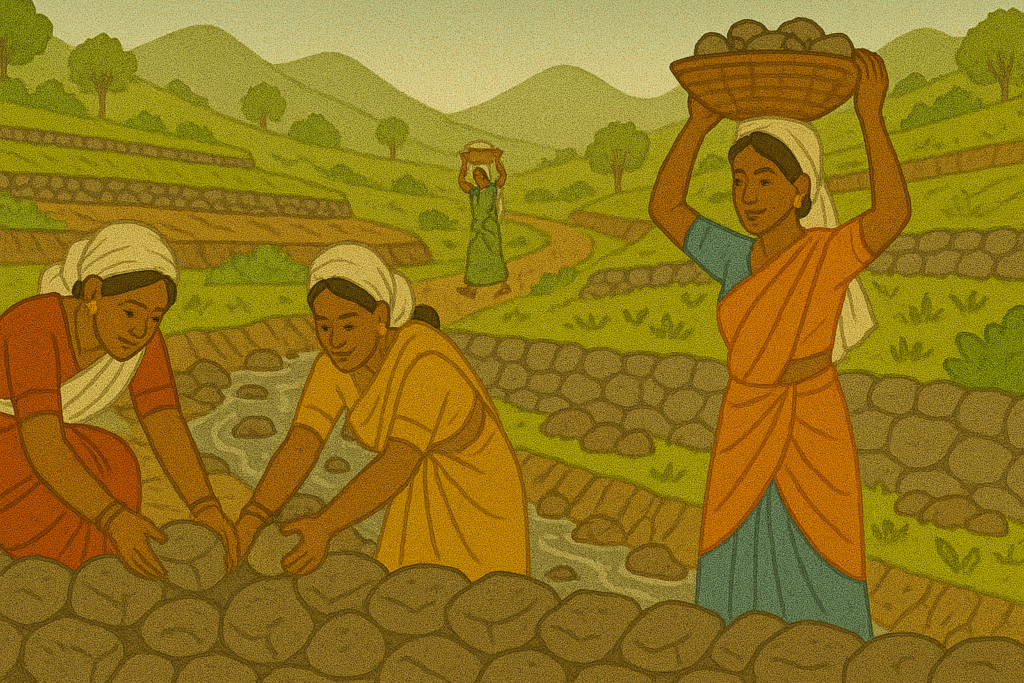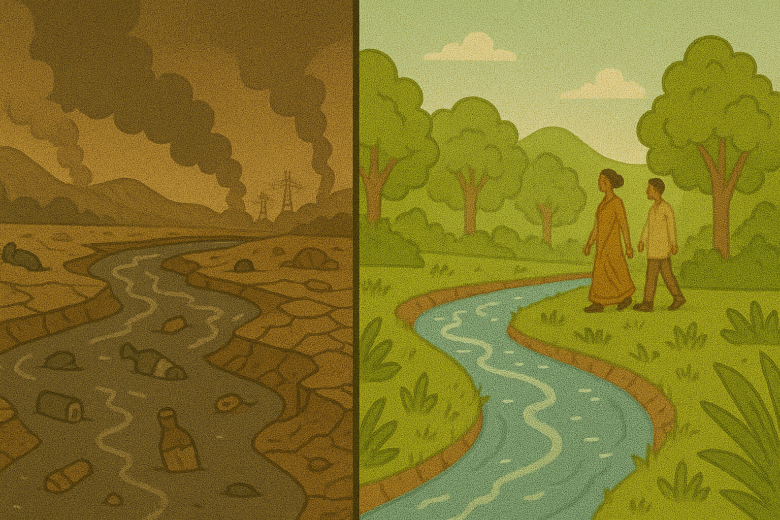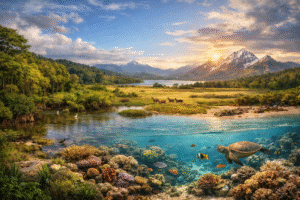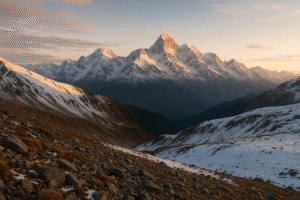Fun Fact: India is home to over 20 major rivers — yet nearly 70% of its surface water is contaminated.
For a country that reveres rivers as goddesses, we’ve done a poor job protecting them. From the Yamuna foaming with industrial waste to the Godavari gasping for breath in dry summers, India’s rivers are in crisis. But while policymakers debate and dams are delayed, quiet revolutions are unfolding in the countryside.
This is the story of India’s water warriors — ordinary people in villages, small towns, and tribal hamlets who are bringing rivers back to life with nothing but grit, traditional wisdom, and a fierce sense of stewardship.
The Water Crisis We Can’t Ignore
India’s water situation is precarious. According to the NITI Aayog’s Composite Water Management Index, nearly 600 million Indians face high to extreme water stress. Urban rivers are turning into sewers. Rural ponds are vanishing. And groundwater, our invisible lifeline, is being sucked dry faster than nature can replenish it.
But amidst this grim narrative, a hopeful one is emerging — that of communities taking control, reviving rivers, and rebuilding their relationship with water, one stream at a time.
Maharashtra’s Revival Miracle: The Tale of Waghadi River
In Maharashtra’s Yavatmal district, the Waghadi River had all but disappeared — choked by silt, stripped of vegetation, and abandoned by rain. Local farmer-turned-activist Gopal Tiwari, along with the non-profit Paani Foundation (founded by actor Aamir Khan), mobilised villages to desilt the riverbed, build check dams, and plant native trees along the banks.
Within two years, water tables rose, the river began flowing perennially, and crop yields improved by over 30%. It wasn’t a government project. It was grassroots engineering powered by shovels, sweat, and solidarity.
What Paani Foundation does: A non-profit working on drought prevention through community-led watershed management in rural Maharashtra.

Rajasthan’s Johads: Ancient Wisdom Resurfaces
In the arid stretches of Alwar district, Rajasthan, water was once a distant memory. Enter Rajendra Singh, now famously known as the “Waterman of India.” In the 1980s, he started reviving traditional johads — small earthen check dams used for water storage.
Working with villagers, Singh helped construct over 8,000 johads, reviving five rivers, including the once-dead Arvari. Today, these rivers flow year-round. The Arvari even has its own people’s parliament to manage its use — a model of community governance in action.
What Tarun Bharat Sangh does: A rural development NGO led by Singh, focused on water conservation and environmental regeneration in Rajasthan.
Tamil Nadu: The Noyyal River’s Second Chance
The Noyyal River in Tamil Nadu, once a sacred source of drinking water, had become an industrial drainage channel, poisoned by textile effluents from Tiruppur. But instead of surrendering, local organisations like Siruthuli — a Coimbatore-based citizen movement — began fighting back.
They initiated large-scale cleanup drives, awareness campaigns, and afforestation projects along the river’s banks. Over time, public pressure forced several polluting units to install proper waste treatment systems. The river hasn’t fully recovered, but it’s breathing again.
What Siruthuli does: A citizen-led initiative in Tamil Nadu focusing on water body restoration, reforestation, and environmental education.
Tribal Wisdom: Reviving Rivers in Jharkhand
In Jharkhand’s hilly terrain, the Koel-Karo basin had suffered from unchecked mining and deforestation. But Adivasi (tribal) communities, often ignored in national conversations, took matters into their own hands.
Using traditional soil-and-moisture conservation techniques, they built stone bunds, restored hill streams, and reforested degraded land. With no external funding or top-down planning, they turned barren slopes into lush commons and revived their sacred rivers. Their model? Trust in the land and collective action.
Youth Movements: Instagram Meets Irrigation
Not all water warriors are rural elders. In cities like Pune, Bengaluru, and Delhi, young urbanites are becoming “stream influencers.” Groups like The Ugly Indian and Jal Shakti Abhiyan have used social media to crowdsource volunteers and funds for restoring small urban streams, ponds, and lakes.
Cleanup drives are livestreamed. Before-and-after reels go viral. And suddenly, water conservation is trending. It’s sustainability with swag — and it’s working.
What Jal Shakti Abhiyan is: A campaign by the Ministry of Jal Shakti (Water Resources) to accelerate water conservation across India with community participation.
Why Communities Succeed Where Governments Struggle
Unlike large government projects that often take years to plan and billions to execute, community-driven water revival is faster, cheaper, and far more sustainable. Why?
- Local Knowledge: Villagers understand their terrain, rainfall, and water flows better than any imported consultant.
- Ownership: When people build a structure themselves, they maintain it.
- Accountability: There’s no red tape — only peer pressure and pride.
The success of these initiatives shows that when water is seen not as a commodity, but as a shared resource, people step up. They don’t wait for help — they become the help.
Challenges Ahead: Not All Smooth Flow
That said, these efforts face hurdles:
- Industrial pollution often undoes local conservation work.
- Climate change is making rainfall patterns unpredictable.
- Urban sprawl swallows up catchment areas and wetlands.
Yet, communities keep adapting — digging deeper, organising better, and fighting harder.
What Can You Do?
You don’t need to live near a river to be a water warrior. Here’s how anyone can join the movement:
- Harvest rainwater at home or in your society.
- Avoid chemical-laden cleaning agents that pollute wastewater.
- Volunteer with a local lake or river restoration group.
- Educate others about traditional water wisdom.
- Hold authorities accountable for polluting industries or illegal construction near water bodies.
If millions could revive rivers with just spades and community spirit, imagine what we could do with awareness, technology, and political will.
Conclusion: Water Is Memory — Don’t Let It Fade
Rivers are more than just water bodies. They’re carriers of memory, history, and culture. When they dry up, so does a part of who we are. But when they return, they bring back life — not just to fields and forests, but to villages, livelihoods, and hope itself.
India’s water warriors show us that the path to ecological restoration doesn’t always begin in Parliament or UN conferences. Sometimes, it begins with a few villagers, a dry stream, and a collective dream.
Author’s Note
This blog is a tribute to the countless nameless villagers, farmers, elders, youth, and tribal leaders who are quietly changing the course of India’s water future. Their work may not make headlines, but it is shaping history — one revived stream at a time.
G.C., Ecosociosphere contributor.
References and Further Reading
- https://paanifoundation.in – Paani Foundation
- https://www.tarunbharatsangh.in – Tarun Bharat Sangh
- https://siruthuli.com – Siruthuli
- https://jalshakti-dowr.gov.in – Ministry of Jal Shakti





Comments
The content in this blog is truly eye-opening. This post is really informative and provides great insights! Fantastic job covering this topic in such depth! The examples provided make it easy to understand. I enjoyed reading this and learned something new. I’ve been searching for information like this for a while. This blogpost answered a lot of questions I had. I’m bookmarking this for future reference.